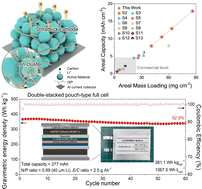DNA Barcoding‐Enabled Tracking of Lipid Nanoparticles: Drug‐Loading‐Dependent Biodistribution and Tumor Microenvironment Targeting
Advanced Healthcare Materials, EarlyView.

In this study, lipid nanoparticles are tracked in vivo using DNA barcodes to determine how varying drug loadings affect their delivery behaviors in mice. A cost-effective strategy is developed for simultaneously monitoring the biodistribution of a library of lipid nanoparticles (LNPs). Importantly, LNPs with high drug loading show promise for future cancer immunotherapy, underscoring the importance of investigating drug-loading effects.
Abstract
Lipid nanoparticles (LNPs) are versatile drug delivery systems, yet the impact of drug loading (DL) on their biodistribution and cellular uptake remains poorly understood. Optimizing drug loading is crucial for enhancing therapeutic efficacy and safety, as higher loading allows for lower LNP doses, reducing overall nanomaterial burden. Addressing this knowledge gap is essential for advancing LNP-based cancer therapies. This study integrates DNA barcoding technology with LNPs to evaluate their in vivo delivery behaviors under varying drug loadings. Using a sequential nanoprecipitation method, DNA-barcoded LNPs with low (1%), medium (16%), and high (26%) drug loadings are fabricated, each tagged with a unique DNA barcode for precise tracking. Pooled LNPs are intravenously administered to tumor-bearing mice, and their biodistribution across organs is quantified via qPCR. High drug-loading LNPs demonstrate preferential accumulation in the spleen, while low drug-loading LNPs exhibit higher liver accumulation, suggesting faster clearance. Cellular uptake analysis reveals enhanced uptake of high drug-loading LNPs by tumor-associated macrophages within the tumor microenvironment (TME). This study establishes a robust platform for simultaneous and high-sensitivity monitoring of LNP behaviors, significantly reducing animal use and interanimal variability. The findings guide the rational design for developing optimal LNPs for cancer therapies targeting specific TME components.














































































































































